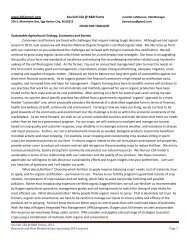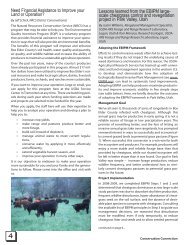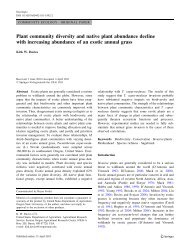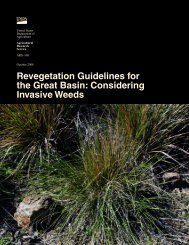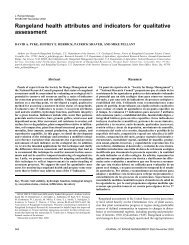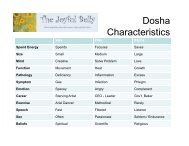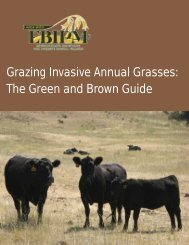Exotic Plant Management in California Annual Grasslands
Exotic Plant Management in California Annual Grasslands
Exotic Plant Management in California Annual Grasslands
You also want an ePaper? Increase the reach of your titles
YUMPU automatically turns print PDFs into web optimized ePapers that Google loves.
example, <strong>in</strong> a revegetation effort along a yellow starthistle–<strong>in</strong>festedcanal and roadside, the first step was to <strong>in</strong>tensivelymanage starthistle (Brown et al. 1993; Thomsen et al.1994). The second step was to reseed with competitive, deeprootednative perennial grasses. In the f<strong>in</strong>al stage, nativebroadleaf forbs such as <strong>California</strong> poppy and lup<strong>in</strong>es wereseeded <strong>in</strong>to the system.Biological control can also play a key part <strong>in</strong> the success ofan <strong>in</strong>tegrated control program. For example, Huffaker andKennett (1959) reported on the success of the biological controlprogram for the management of common St. Johnswort.They noted that maximal improvement of the rangeland wasachieved when the biocontrol agent was used <strong>in</strong> comb<strong>in</strong>ationwith moderate timely graz<strong>in</strong>g. This comb<strong>in</strong>ation preventedthe expansion of ripgut brome <strong>in</strong> the grassland sitespreviously occupied by common St. John’s wort.In a review, Lym (2005) described the numerous situations<strong>in</strong> which the successful use of biological control <strong>in</strong>sects(Aphthona spp.) for leafy spurge (Euphorbia esula) depend onthe use of other conventional weed control methods. Integrationof Aphthona spp. with herbicides, graz<strong>in</strong>g, or burn<strong>in</strong>ggave more rapid and better leafy spurge control that anymethod used alone.F<strong>in</strong>ally, it is important to emphasize that the ultimateobjective of any control strategy is to develop a “healthy”functional ecosystem. Competitive background vegetation<strong>in</strong> grasslands will not only reduce the potential establishmentof <strong>in</strong>vasive plants, but can also enhance the effectivenessof other control strategies, <strong>in</strong>clud<strong>in</strong>g biologicalcontrol (McEvoy and Coombs 1999). As an example, theseed feed<strong>in</strong>g <strong>in</strong>sects for yellow starthistle can have attackrates of greater than 90% (DiTomaso et al. 2006), yet reduceseedset by only about 50–60% (Woods et al. 2004). In a systemwith competitive vegetation, a reduction of this levelmay suppress starthistle to an acceptable and susta<strong>in</strong>ablelevel.296 POLICY AND MANAGEMENT



